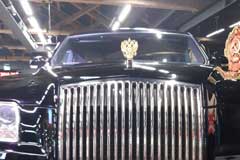James Bruges
The Little Earth Book
Издательство: The Disinformation Company, 2004 г.
0972952926, 978-0972952927
Книгопечатная продукция
Объем: 192 стр.
The Earth is now desperately vulnerable; so are we. This gift-priced-and-sized book contains original, stimulating mini-essays about what is going wrong with our planet and about the greatest challenge of our century: how to save the Earth for us all.It is pithy, yet intellectually credible well-referenced, wry, yet deadly serious. An all-new U.S. edition-the U.K. edition has sold over 40,000 copies!
Researched and written by an eminent British architect, James Bruges, The Little Earth Book is a clarion call to action, a mind-boggling collection of mini-essays on today`s most important environmental concerns, from global warming and poisoned food to economic growth, Third World debt, genes and "superbugs." Undogmatic but sure-footed, thestyle is light, explaining complex issues with easy language, illustrations and cartoons. Ideas are developed chapter by chapter, yet each one stands alone. It is an easy browse-equally at home bedside, in the bathroom or in a briefcase.
The Little Earth Book provides hope, with new ideas and examples of people swimming against the current, of bold ideas that work in practice. Did you know:
If everyone adopted the Western lifestyle, we would need five earths to support us.
In 50 years the U.S. has-with intensive pesticide use, doubled the amount of crops lost to pests.
Environmental disasters have created more than 80 million refugees.
Packed with easy-to-digest information, James Bruges spells out, clearly, concisely and with alarming documentation just what we`re up against and what must be done.
Presented in the same trim size as 50 Things You`re Not Supposed To Know , this book continues Disinformation`s line of value-priced, impulse purchase books.
We will be working with environmental groups to launch The Little Earth Book on Earth Day 2004 (April 22nd) with a wave of publicity and advertising.
Посмотрите также...
Water and Geothermal Energy
What is hydroelectricity? How does a tidal power station work? Where can water be used for energy? `Fueling the Future` asks the questions that young people want answered. Each chapter contains a different question, so readers can develop their ......
Fueling the Future: Wind Energy
What is a wind turbine? Where does wind energy work best? What are the limitations of wind energy? `Fueling the Future` asks the questions that young people want answered. Each chapter contains a different question, so readers can develop their ......
The Age of Turbulence
The most remarkable thing that happened to the world economy after 9/11 was ... nothing. What would have once meant a crippling shock to the system was absorbed astonishingly quickly, partly due to the efforts of the then Chairman of the Federal ......
Panic! The Story of Modern Financial Insanity
From Black Monday to the Asian financial crisis, from the internet bubble to mortgage meltdown, our lives are ruled by crazy cycles of euphoria and hysteria that manage to grip the world but are all-too-soon forgotten. In this unique collection ......
The Return of Depression Economics and the Crisis of 2008
What better guide could we have to the 2008 financial crisis and its resolution than the newest Nobel Laureate in Economics, columnist and author Paul Krugman? In a dazzling and prescient polemic, now fully updated from his 1999 classic, ......
Superfreakonomics
The Freakquel is here. In their new international bestseller, "Superfreakonomics", Steven Levitt and Stephen Dubner look deeper, question harder and uncover even more hidden truths about our world, from terrorism to shark attacks, cable TV to ......
How Markets Fail: The Logic of Economic Calamities
How did we get to where we are? John Cassidy shows that the roots of our most recent financial failure lie not with individuals, but with an idea - the idea that markets are inherently rational. He gives us the big picture behind the financial ......
The Little Book of Behavioral Investing
Ben Graham, the father of value investing, once said: "The investor`s chief problem - and even his worst enemy - is likely to be himself". Sadly, Graham`s words are still true today. Bias, emotion, and overconfidence are just three of the many ......


















